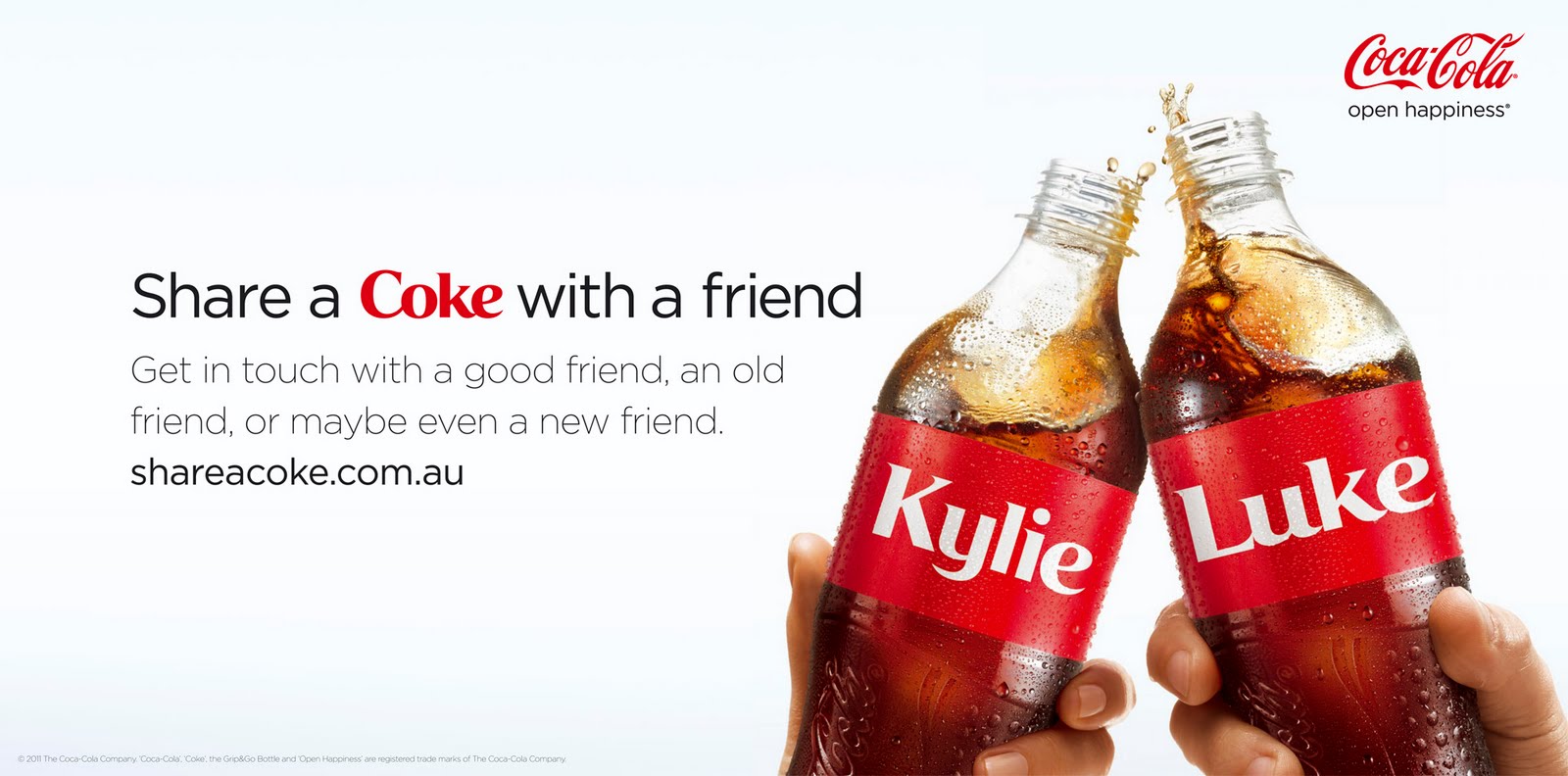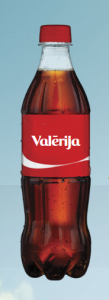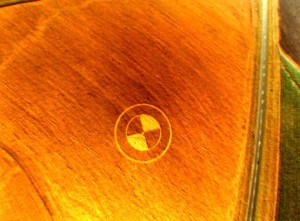People think that multinational companies like McDonald’s or Coca-Cola are happy with what they already have and do not see a point in developing their business further – they already have more than enough. This assumption is wrong. Marketers from Coca-Cola are still able to come up with new creative strategies that actually can increase company’s market share.

Coca-Cola noticed that Australians prefer other soda brands over Coke, so they have decided to try a more personal approach. In 2011, they personalized Coke’s bottles by writing Australian names on its labels. Their idea was that people would share a bottle with their friends. This marketing campaign was a huge success in Australia resulting in an increase by 7% of Coke’s consumption among young adults, as well as in a greater traffic on Coke’s Facebook page.Two years later, in 2013, “Share a Coke” has shaken up European continent. In each of 22 European countries Coca-Cola has chosen 150 of the most popular countries’ names and put them on Coke’s bottles. Another attempt to attract new consumers was made this summer in Argentina. By targeting new sector of greener consumers that care about the environment, Coke is hoping to increase profits and extend their market. Their new product is called Coca-Cola Life that is produced with stevia and sugar as sweeteners and has 60% less calories than the classic version. However, it is not the first time when Coca-Cola is using stevia and Coke Life does not seem to be very innovative. But for environment-friendly consumers that might be a big deal because now a bottle is fully recyclable and is composted from 30% vegetable fiber. Coca-Cola Zero was also introduced only in one country in 2005 and now it is sold everywhere. If a new product successfully meets Argentinians needs, it is likely that soon we will also see green Coke in our shops.
Another attempt to attract new consumers was made this summer in Argentina. By targeting new sector of greener consumers that care about the environment, Coke is hoping to increase profits and extend their market. Their new product is called Coca-Cola Life that is produced with stevia and sugar as sweeteners and has 60% less calories than the classic version. However, it is not the first time when Coca-Cola is using stevia and Coke Life does not seem to be very innovative. But for environment-friendly consumers that might be a big deal because now a bottle is fully recyclable and is composted from 30% vegetable fiber. Coca-Cola Zero was also introduced only in one country in 2005 and now it is sold everywhere. If a new product successfully meets Argentinians needs, it is likely that soon we will also see green Coke in our shops.



